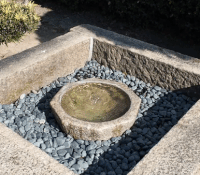Difference between revisions of "Water"
Jump to navigation
Jump to search
m (MySakeAdminSSA moved page Sake Water to Water: New title) |
(→Water History: Youtube video to GIF) |
||
| Line 7: | Line 7: | ||
|} | |} | ||
== Water History == | == Water History == | ||
| + | [[File:Miyamizu Well.gif|200x175px|link=https://www.youtube.com/watch?v=Ef3ltvbyMWI]] | ||
| − | <youtube width="200" height="175">Ef3ltvbyMWI?rel=0</youtube> | + | <!-- This code is for the YouTube video, in case we ever need it again. |
| + | <youtube width="200" height="175">Ef3ltvbyMWI?rel=0</youtube> --> | ||
== Water In Sake Making == | == Water In Sake Making == | ||
Revision as of 18:26, 24 August 2020
| Table of contents |
|---|
Water History
Water In Sake Making
- 80% of sake is water.
- Sake changes depending on whether hard or soft water is used during production.
- Most of Japan has soft water.
- Sake made with soft water will be clean and semi-sweet.
- Sake breweries are frequently established in areas known for their pure spring water.
- Miyamizu (Nada, Hyogo Prefecture) and Gokousui (Fushimi, Kyoto Prefecture) are two of the best.
- Iron and manganese content should be low in water to make good sake.
